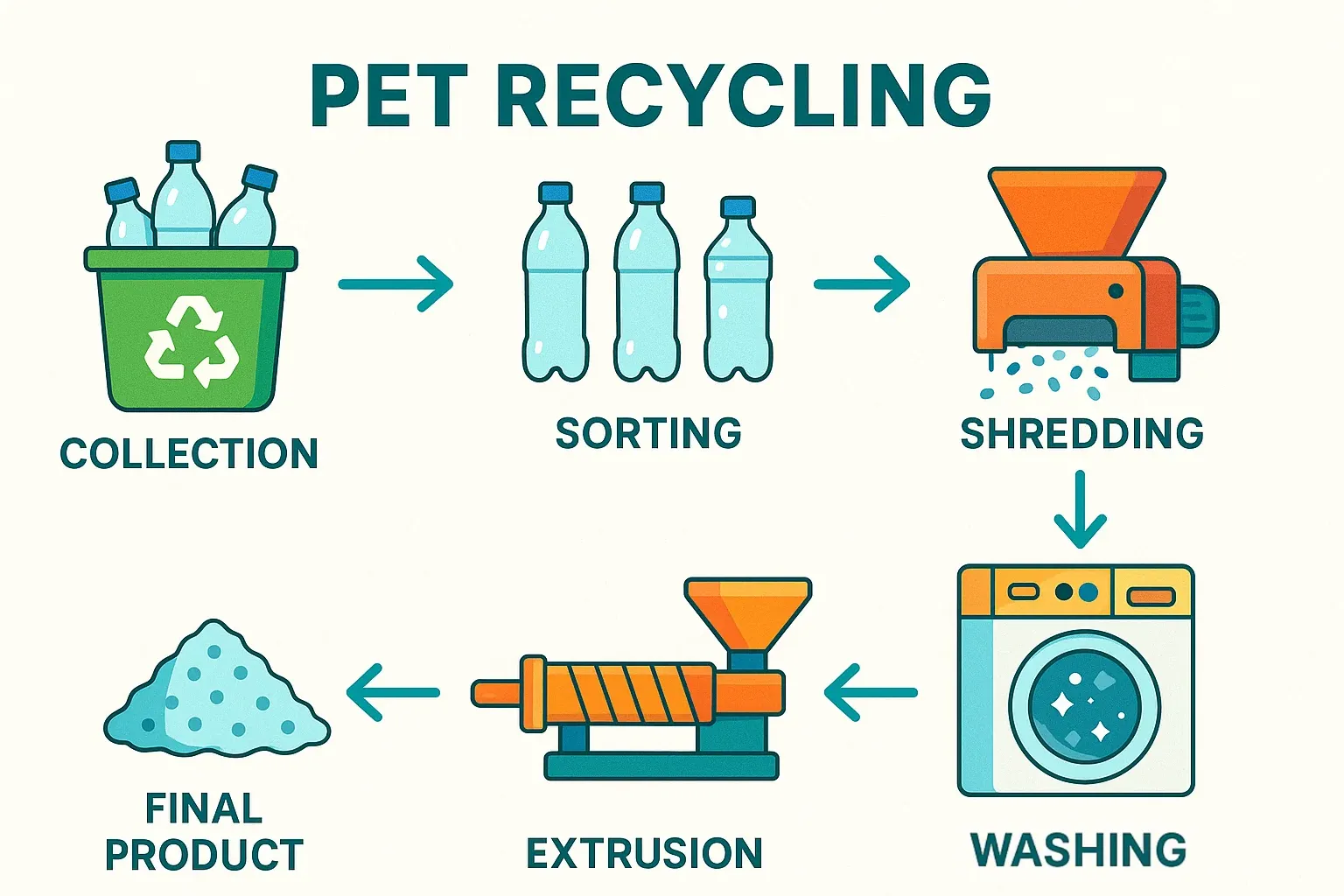The Ultimate Guide to PET Recycling Machines
Discover how PET recycling technology is transforming waste management and creating sustainable solutions for our planet
In today’s world, the importance of recycling has never been more critical. Among the many materials that can be recycled, one of the most significant is PET (Polyethylene Terephthalate). PET is widely used in packaging, especially for beverages, but when not recycled properly, it can lead to environmental pollution. This is where the PET Recycling Machine comes in. In this guide, we will dive deep into PET Recycling Machines, their types, benefits, and how they work.
Understanding PET Recycling Machines
PET Recycling Machines are specialized pieces of equipment designed to process used PET materials into reusable forms. These machines can transform discarded plastic bottles, containers, and other PET-based products into high-quality recycled materials, ready to be used in a variety of industries and applications.
How Does a PET Recycling Machine Work?
A typical PET Recycling Machine operates in several stages, each crucial for turning waste PET into a valuable resource:
Collection
Used PET materials are collected from various sources, including beverage bottles, containers, and other plastic items.
Sorting
The collected materials are sorted based on their type and color to ensure uniformity during processing.
Shredding
The sorted PET is then shredded into smaller pieces to facilitate easier washing and further processing.
Washing
The shredded PET undergoes a thorough washing process to remove contaminants such as dirt, labels, and other impurities.
Drying
After washing, the material is dried to eliminate moisture and prepare it for pelletizing.
Pelletizing
Finally, the clean and dry PET flakes are melted down and formed into pellets, which can then be reused in manufacturing new products.
Benefits of Using a PET Recycling Machine
Investing in a PET Recycling Machine offers numerous advantages:
- Environmental Impact: It significantly reduces landfill waste and conserves natural resources by recycling existing plastics.
- Cost-Effective: Reusing PET materials lowers raw material costs, which can result in significant savings over time.
- Energy Efficient: Producing recycled PET requires less energy compared to manufacturing new plastic from raw materials.
- High-Quality Output: The recycled materials produced are of high quality and can be used across various industries, ensuring sustainability and durability.
Types of PET Recycling Machines
There are several types of PET Recycling Machines available, each designed to meet different needs:
- Bottle-to-Bottle Recyclers: These machines are designed specifically to recycle beverage bottles back into new bottles, making them ideal for industries focused on bottle reuse.
- Flake Washers: Focused on washing shredded PET flakes before they undergo further processing, ensuring the removal of any remaining impurities.
- Granulators: These machines are used to shred larger plastic items into smaller, manageable granules for easier processing in recycling.
Choosing the Right PET Recycling Machine
Selecting the right PET Recycling Machine depends on several factors such as capacity, efficiency, and ease of operation. It’s essential to choose a machine that aligns with your specific recycling needs. Consider the scale of your operation, the types of PET materials you process, and the desired output quality.
Common Applications for Recycled PET
Recycled PET is a versatile material with a wide range of applications:
Textiles
Recycled PET is often used in the production of clothing, carpets, and upholstery.
Packaging Materials
It is commonly recycled into new bottles, containers, and packaging films, contributing to a circular economy.
Automotive Parts
Recycled PET is used in the manufacture of various automotive components, providing a sustainable alternative to virgin plastic.
Frequently Asked Questions
A PET Recycling Machine processes used PET materials, like plastic bottles and containers, into reusable forms that can be used in various industries.
It helps reduce waste in landfills, conserves natural resources, and lowers the need for virgin plastic production, contributing to a more sustainable world.
Recycled PET can be transformed into textiles, packaging materials, automotive parts, and more, promoting a circular economy.
Yes, it is highly cost-effective as it reduces raw material costs and allows businesses to reuse valuable plastic materials.
Conclusion
Recycling plays a vital role in our efforts to protect the environment, and PET recycling is no exception. A well-functioning PET Recycling Machine can help businesses turn waste into valuable resources, promoting sustainability while enhancing operational efficiency. As we continue to face pressing environmental challenges, embracing technology like PET Recycling Machines will be essential in our pursuit of a greener, more sustainable future.



